Optimization of Xylooligosaccharides Production by Native and Recombinant Xylanase Hydrolysis of Chicken Feed Substrates
- PMID: 38069432
- PMCID: PMC10707560
- DOI: 10.3390/ijms242317110
Optimization of Xylooligosaccharides Production by Native and Recombinant Xylanase Hydrolysis of Chicken Feed Substrates
Abstract
Poultry production faces several challenges, with feed efficiency being the main factor that can be influenced through the use of different nutritional strategies. Xylooligosaccharides (XOS) are functional feed additives that are attracting growing commercial interest due to their excellent ability to modulate the composition of the gut microbiota. The aim of the study was to apply crude and purified fungal xylanases, from Trichoderma harzianum, as well as a recombinant glycoside hydrolase family 10 xylanase, derived from Geobacillus stearothermophilus T6, as additives to locally produced chicken feeds. A Box-Behnken Design (BBD) was used to optimize the reducing sugar yield. Response surface methodology (RSM) revealed that reducing sugars were higher (8.05 mg/mL, 2.81 mg/mL and 2.98 mg/mL) for the starter feed treated with each of the three enzymes compared to the treatment with grower feed (3.11 mg/mL, 2.41 mg/mL and 2.62 mg/mL). The hydrolysis products were analysed by thin-layer chromatography (TLC), and high-performance liquid chromatography (HPLC) analysis and showed that the enzymes hydrolysed the chicken feeds, producing a range of monosaccharides (arabinose, mannose, glucose, and galactose) and XOS, with xylobiose being the predominant XOS. These results show promising data for future applications as additives to poultry feeds.
Keywords: chicken feed; lignocellulosic biomass; response surface methodology; xylanase; xylooligosaccharides.
Conflict of interest statement
The authors declare no conflict of interest.
Figures

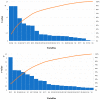
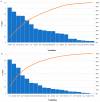
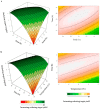
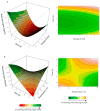
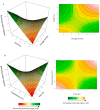





References
-
- Passos A.A., Park I., Ferket P., von Heimendahl E., Kim S.W. Effect of dietary supplementation of xylanase on apparent ileal digestibility of nutrients, viscosity of digesta, and intestinal morphology of growing pigs fed corn and soybean meal-based diet. Anim. Nutr. 2015;1:19–23. doi: 10.1016/j.aninu.2015.02.006. - DOI - PMC - PubMed
-
- Duarte M.E., Zhou F.X., Dutra W.M., Kim S.W. Dietary supplementation of xylanase and protease on growth performance, digesta viscosity, nutrient digestibility, immune and oxidative stress status, and gut health of newly weaned pigs. Anim. Nutr. 2019;5:351–358. doi: 10.1016/j.aninu.2019.04.005. - DOI - PMC - PubMed
-
- Aragon C.C., Ruiz-Matute A.I., Corzo N., Monti R., Guisán J.M., Mateo González C. Production of Xylo-oligosaccharides (XOS) by controlled hydrolysis of xylan using immobilized xylanase from Aspergillus niger with improved properties. Integr. Food Nutr. Metab. 2020;5:1–9. doi: 10.15761/IFNM.1000225. - DOI
MeSH terms
Substances
Grants and funding
LinkOut - more resources
Full Text Sources

